Hello lovely steemians!
It feels good and pleasing to write in this lovely platform once again, and I hope this meet you well. This world cup period takes most of my hours per day reasons I haven’t been here of late but I summoned the courage and kill laziness to bring to our learning another interesting topic. Without wasting much of our time, I want to use this medium to appreciate every comments and contributions on my last post I was indeed overwhelmed and I hope for more cordial contributions and lovely comments between us.
On my last post I put to pen in explaining snow and freezing rain. During my deep research on it I came across another similar topic in WATERFALL. After deep and critical study and research on waterfall, I thought it will be wise of me to bring it to the feet and learning of you great steemians. I will try as much as possible to break some terms down to our different understanding and perspective for easy comprehension that even a 10 years old kid can understand. Let’s get started.

PREFACE ON WATERFALL
Waterfall in an understandable language means a territory or region in a stream or river where running water drops vertically off a cliff. It can also be said to be an area where water across the stream, river or a melting ice (i.e in form of glacier) drops perpendicularly to the plane of the horizon to the primary axis or otherwise from a saturated highest point directly overhead or in the zenith. Waterfall van also be called a “cascade”.
I once wondered where these water dropping could be from, their source and the way they are formed. I know you must be wondering as well because we know almost everything if nit all in life has an origin. So let’s discuss the way waterfall is formed.
FORMATION OF WATERFALL
For a simple and comprehensive knowledge about its formation, I will say erosion and waterfall plays an intertwine role i.e they complement each other. What am I saying?
Erosion is a key to the formation of waterfall fall through weathering processes of rocks. Erosion chisels rocks and washes the debris of these rocks to the bedrock. When this occurs repeatedly, there exist a cut in the stream which goes deep to where this rock debris are gathered. This debris results to cliffs and ledges where waterfalls formation is developed.
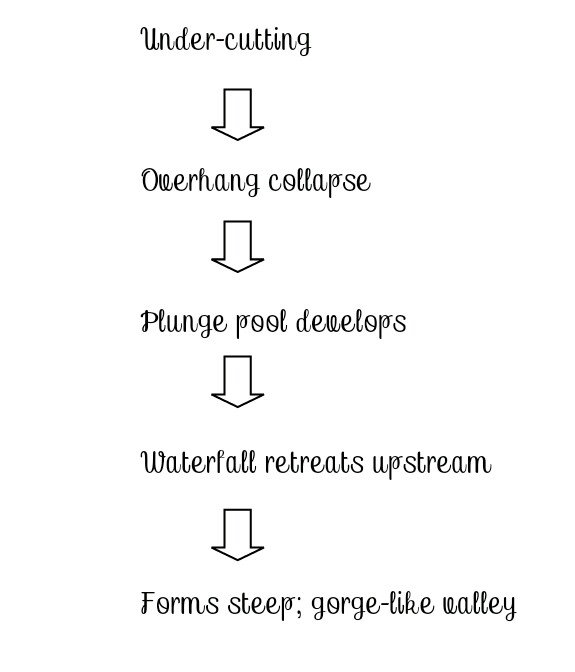
Let me paint the picture of this formation well to our understanding because I know it isn’t too clear yet. Starting from the formation of water from the river because without water there cannot be any form of waterfall whatsoever. I know we must be familiar with the water cycle processes but permit me to use this medium to bring it back to our memory.
In the presence of sun, evaporation occur from sea, ocean or any of the water bodies forming water vapor in the clouds then precipitation process occur from the cloud in form of rainfall. This process is then repeated continuously. Putting the water cycle process to bed already we then face the waterfall formation squarely.
We all know that rocks brings about water; water which is a very common and well known erosive agent which transverse through different rock layers at varying erosion rate. During this transverse process, water flows over either hard rock (where erosion rate is very fast and rapid) or soft rock (where the erosion rate is slow). It is reliable to say that hard rocks are tougher to get easily eroded than the soft rock. So when the soft rock is eroded through the process of hydraulic action (i.e the compressive force of the flow of water from river or stream) and abrasion (the effect of the flow of water crackling debris of weathered rocks or the surface of the soft rock against it bed and river bank) a notch is experienced in the bedrock.
A notch is when the soft rock experiences a groove or dip within it. It increases the speed of flow of water from the river which makes it erode in the soft rock thereby causing or forming a vertical drop. As the hydraulic action of the waterfall continues, water moves backwards towards or against the back wall which makes the erosion more rapid and this process is called “headward erosion”. In the course of this process, undercutting is proficient in the hard rock which makes the hard rock collapse and falls into the flowing river. I can technically say it is one of the reasons why most rivers or streams have stones or weathered rocks in it. The hydraulic action of water is responsible for these weathered rocks process.

A PRACTICAL EXAMPLE OF WATERFALL
You can try this technique at home to give you a practical view on all I have explained thus far. It is just the basic science adopted by the formation of waterfall
Step 1: make a large pile of sand which represents the soft layer
Step 2: get a hard thick flat board which represents the hard layer
Step 3: insert the board in the middle of the soft layer or the sand pile formed
Step 4: pour water (representing the stream or river) to the slop of the heap or pile of sand which is representing the soft layer at the same side you have the board and see for yourself how the water flows over the hard and soft layer.
[Image of a practical home example of waterfall formation sketched by me @adeosunadeyinka]
If all these steps are done rightly, you will notice that water will flow down the pile of sand and cuts into it thereafter. After cutting into the soft layer, the water will then flow over the hard layer without cutting into it which reaches to the edge of the hard layer and dropping down to the next soft layer (the pile of sand). So the shape and type of waterfall depends on how hard the water cuts through both the hard and soft rock in which they are varied.
I hope you find that practical enough? Smiles!
TYPES OF WATERFALL
Permit me to list the types of waterfall as there will be room next time to penetrate on each of them. The best way to classify waterfall is by their type (the way they fall)
- Block waterfall: water that vertically fall from a very wide stream
- Cascade: water falling from rock steps. It also the opposite of cataract as it is safe when playing in it
- Cataract waterfall: a very dangerous type as it is accompanied by the thundering of water
- Horse-tail waterfall: I wish the great detective Sherlock Holmes was here to testify to this type of waterfall as water maintains cordial contact with its bedrock or hard rock underneath them
Fan and chute waterfall find its way under the horse-tail waterfall - Fan waterfall got its name from its shape; as the water descends, it spread out horizontally
- Chute waterfall is a very narrow passage of water from stream which an unusual water pressure occurs
- Frozen waterfall: just as the freezing rain; the water freezes as it falls mostly during winter which does not stay freeze for long
- Multi-step waterfall: different plunge pool connected in series to give a waterfall
- Plunge waterfall: this is basically the opposite of the horse-tail type of waterfall as it does not maintain any form of contact to or with its bedrock. A punch bowl waterfall (this is like a form of converging-diverging type of waterfall as water falling in a converging form spread out in a diverging way such as a wider pool) is classified under the plunge waterfall.

A CASE STUDY OF BLOOD WATERFALL
Are you surprise I said blood waterfall? Yes blood waterfall. Well don’t be scared because it is not actually the pouring down of blood that you must be thinking at the moment but it is the ANTARCTICA WATERFALL also referred to as “Antarctica’s blood red waterfall” because the flow or drops of water is reddish in color.
What must have brought about this reddish colored water? Do you care to know?
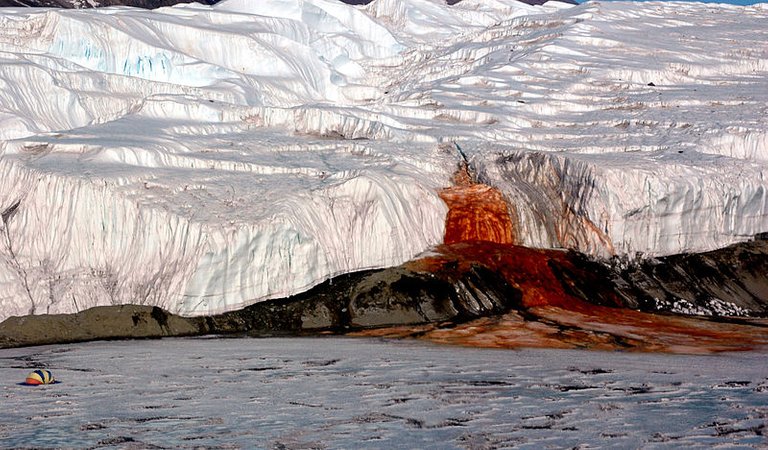
PEEPING THROUGH THE REALM AND FORMATION OF BLOOD FALL
A peep into the mystery of the Antarctica waterfall is actually a very funny thing to think of because the Antarctica’s McMurdo dry valley is actually a rare place waterfall could be least expected to be situated. It is situated at the Taylor valley into the Bonney Lake in Victoria land, East Antarctica. Taylor valley was named after an Australian geologist Taylor Griffith who then was the first to explore the valley and was the first to discover the reddish deposit. It was first said that the red algae present in that region contributed to the color of this fall but later proven scientifically that it was due to the iron oxides.
The Geo-chemistry behind Antarctica waterfall
Research and history made us to understand that about 5million years ago the sea level cannot be compared to what we have today in terms of height which causes the flood of East Antarctica which forms a very salty lake. After some millions of years prior to that research and history, there exist the formation of glacier at the very top of the salty lake that has been formed becomes freeze which makes the water beneath to become saltier. For this to have submerged to the top of the lake there must have been a lot of salt in depth of around 400meters underground because water that is too salty cannot freeze which practical distinguish it from all other sea water as it is 3times saltier than any form of seawater in the world.
Furthermore, these underground extreme salty water does not come in contact with sunlight which is also in starve of oxygen. This salty water that is extremely rich in iron when it sprung to the top of the lake mix up with air and rust thereby depositing the blood as we may call it on the glacier as it falls.
But surprisingly, despite this extremely salt filled water there exist some living things inside the lake and they make their survival in this weird region. They are known as the MICROBES. They live on little oxygen derived from the breaking down of sulphate buried down miles down the glacier. The presence of iron in the water helps them to restore the sulphate in which they can recycle the process of breaking the sulphate to derive energy through oxygen. The process continues in cycle for their survival.
Quite interesting! Right?

EPILOGUE
I will conclude on this topic with the economic and environmental importance of waterfall. The basic economic importance is the tourist of attraction the waterfall brings to the table. They are practically ideal for relaxation, respiration and the beauty of it all is the pleasant mood derived from seeing the beauty of water falling off a cliff or rock.
The environmental benefit of it is that it can be use to generate electricity (hydroelectricity from the water formed) and also serves as a means of irrigation boost to our agricultural world.
On this note I thank you for taking out of your precious time to grace this post. Let’s keep steeming.
Catch you here some other time.
REFERENCE
- Waterfall: Wikipedia
- Waterfall - river landform: Leaving certificate geography
- Waterfall: National Geographic Society
- List of waterfalls by type: Wikipedia
- How are waterfalls formed?: World of waterfalls
- Weathering and erosion information and effect: National Geographic Society
- Antarctica's blood red waterfall: Smithsonian magazine
- Blood falls: Wikipedia
- Why do we care about waterfall?: World of waterfall
If you write STEM (Science, Technology, Engineering, and Mathematics) related posts, consider joining #steemSTEM on steemit chat or discord here. If you are from Nigeria, you may want to include the #stemng tag in your post. You can visit this blog by @stemng for more details.

You can also join us at Promo-Mentors, to improve your blogging skills. Join our discord channel and meet awesome mentors who are willing and ready to shape your writing skills.

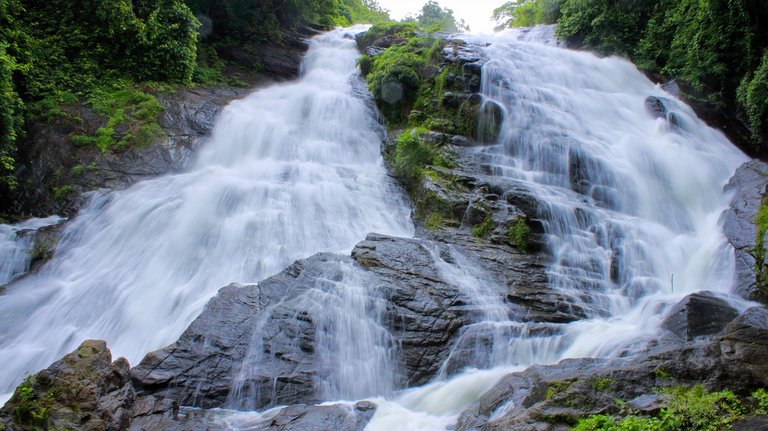
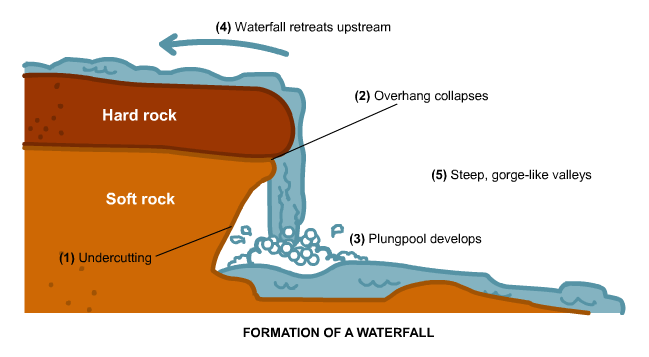
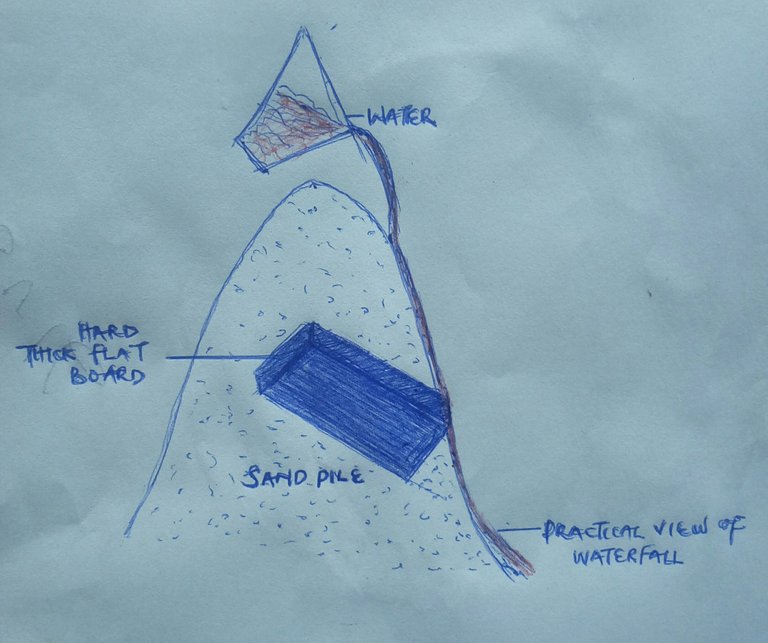
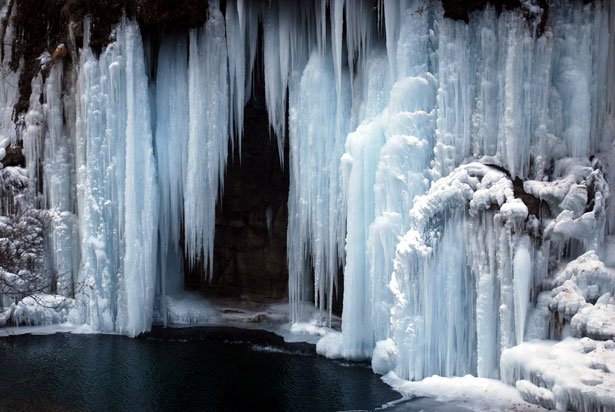
Interesting!
I like the fact that you gave a practical example, even if I didn't do it, as it gave me a better visualisation of the process.
Keep up the good work!
Thanks bro for the kind words. It was nice you stopped by
This has to be the most detailed expository I've ever seen about waterfalls. The blood waterfalls is definitely one that I'm looking forward to seeing up-close. Lovely writeup
I appreciate the kind words bro and also taking your time to read was pleasing as well. Tanks for your time
Congratulations @adeosunadeyinka! You have completed some achievement on Steemit and have been rewarded with new badge(s) :
Click on the badge to view your Board of Honor.
If you no longer want to receive notifications, reply to this comment with the word
STOPTo support your work, I also upvoted your post!
Do not miss the last post from @steemitboard!
Participate in the SteemitBoard World Cup Contest!
Collect World Cup badges and win free SBD
Support the Gold Sponsors of the contest: @good-karma and @lukestokes
Thanks a lot for the honour
You received a 10.0% upvote since you are not yet a member of geopolis and wrote in the category of "geology".
To read more about us and what we do, click here.
https://steemit.com/geopolis/@geopolis/geopolis-the-community-for-global-sciences-update-4
I love them microbes. Their ubiquitous nature still amazes me. The ones that thrive and survive in extreme environments such as the Antarctica are called extremophiles. Thanks for adding to me. Good research!
You also added something to me as well. I have never heard of extremophiles. Thanks for the input.. Nice having you here
I am glad we both learned something new.
Wow.... This post is very detailed. Just like you said that a 10 yr old can understand it, I found as such. Kudos @adeosunadeyinka
i am glad with your warm input. i am also glad i could pass across something meaningful for you to understand. Nice seeing you around here